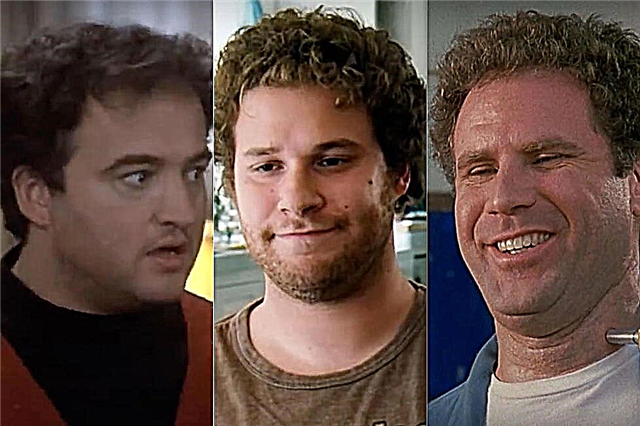Many people think that through cleaning, coins can increase in value. After all, shiny and clean coins look pretty. When minted, the coin looks shiny and glossy. Her initial condition gradually deteriorates as she begins to participate in trade. In addition, after cleaning, the coin tarnishes, thus losing its original surface characteristics. And the most common question that newbies ask is: "How can I restore the shine of my coins?" or "How can I get my coins stamped shiny?" Many valuable coins have already been ruined by such newcomers.
Numismatists call the stamp luster the natural pristine luster of a coin. Most often it is characterized by a ray running around the field of the coin. The key word here is "natural". And the brilliance achieved by any artificial means (polishing, cleaning with abrasives, etc.), on the contrary, only devalues the coin, actually killing it for numismatics. When, during the minting process, the die of a coin is immersed in the blank under strong pressure, a gloss appears on its surface. This process causes changes in the metal at the molecular level. The metal of the workpiece, under strong pressure, envelops the flat surface of the coin matrix, as well as the edge of the rim, as a result of which subtle ribbed edges appear on it.
Unrefined shiny coins may have a stamped sheen!
As a result of the process, when the metal is forced into the depressions of the matrix under very high pressure, something unusual happens. One of the results of the coin minting process is a beautiful and radiant luster. A shiny surface or stamped sheen is easiest to see on larger coins.
After the first appearance of the Morgan Dollars, they began to be called "wheels", in part because when the coin was turned at different angles to the light, the effect of a rotating windmill appeared. Another reason for the disparaging term "wheel" was the large size and weight of the coin. Having appeared in circulation, the Morgan Dollars were rather unpopular among the population. In fact, then everyone did not like them so much that even now anyone can buy coins from 1800-1960 directly from banks in absolutely perfect condition! The history of the Morgan Silver Dollar is truly fascinating and incredible!
To see the amazing wheel effect, you need to take any recently minted UNC (uncirculated) coin (you probably have some in your pocket right now) and turn it towards the light, and you can watch how the ray of the "wheel" rotates. It is much easier to see this effect not on the reverse, but on the face of the coin (with the denomination), since its surface is flatter, and is called the field.
Why is it so important NOT to clean your coins?
It is very important for every numismatist to understand how to distinguish a real stamp gloss from a fake one. In particular, in this case, it will be possible to understand whether a person has cleaned his coins or not.
The preservation of the surface of the coin has become a very important criterion when assessing the value of a coin. Peeled coins are of very little value. While silver coins date from the 20th century and have been refined, most merchants pay only small amounts. If you send your cleaned 20th century regular coins to a coin grading service such as NGC, they will most likely return to you in their "original packaging" without being awarded any grade (preservation grade) and you will simply lose your money. trying to get weak.
It is very important to remember that cleaning the coins will clearly damage the surface of the coin, along with the loss of most of its value. It is fair to say that despite the damaged surface, grading services make rare exceptions for cleaning, especially for those coins that are so rare that people are happy to purchase them in any condition. Classification services are more lenient with refined nineteenth-century coins dating from the 1800s and earlier, but only on the condition that the coin was refined many years ago.
If you clean your dirty and ugly coins, how can it harm them?
Again, we're back to our "wheel" effect, which is about preserving the surface of the coin. In such cases, for example, silver coins will take on a hue or tarnish as a result of the interaction of silver molecules with elements of the environment. As you can later see for yourself, tarnished silver coins will lose their "wheel" effect and the surface of the coin itself will be damaged.
However, despite all these changes, the surface of your coin usually remains intact, which can be easily checked by looking at it through a magnifying glass. The coin has not yet lost its value, since its surface is still in the same condition as when it was released from the mint. In fact, some of the hues acquired by the coin are considered very beautiful, and these changes add value!
However, in some cases it is still necessary to clear the coin. For example, in cases where there are foci of destruction on it, such as mold, rust, carosion and grease stains. If they fail, then most likely they will continue to eat away at the coin. One of the methods of metal cleaning is its "immersion" in acid. During this process, the coin is briefly immersed in a weak acid solution and then washed. This method is less destructive, as it usually removes one or two layers of darkening from the surface of the coin. Unfortunately, this also suffers from the fragile flow lines that create that very stamped sheen. The acid solution can cause the surface of the coin to become dull and ugly. Therefore, use only specialized liquid acids for cleaning coins. It is liquid, and not in the form of a paste, gel or powder. Moreover, each of the metals has its own remedy. For example, if you can use Aladdin type cleaner to clean silver coins, it is not suitable for copper.
Another way to compromise the integrity of the surface of the coin is to use abrasive materials. Goya paste or Wright’s Silver Polish cream is a disgusting example. If you apply it to the surface of the coin and rub it well, it may seem to a beginner that the coin has acquired its original shine or even began to look like Proof. Unfortunately, during this process, the flow lines are damaged, the "wheel" effect and the natural stamp gloss completely disappear. If you push the coin with zeal, then it will resemble a mirror. At the same time, its cost will tend to zero, and an attempt to sell it will only harm your reputation.
The main point is that you should not rub your coins with anything. The only time you can do this is when you find a coin with a metal detector! If the coin has an extremely high value and rarity, then it is better to send it to the Numismatic Conservation Service, where it will undergo a professional cleaning.
We advise you to see:
If you find an old coin and don't know how to clean it at home, then this video is for you!



